For many Victorians, sharing your property with possums is a fact of life. The trees and gardens around our houses provide a
modified woodland similar to their natural habitat.
A possum in your roof or eating your flowers can be very frustrating, but people and possums can live together successfully.
Read on, or download this factsheet, to learn how to manage Common Brushtail Possums in your roof or garden.
Do not feed possums. Human food can be dangerous to possums and cause serious dietary imbalance.
Possums eat the leaves, flowers and fruits of a wide variety of native and exotic trees and shrubs. The Common Brushtail Possum may also eat grass, fungi, bird's eggs and baby birds.
Common Brushtail Possum
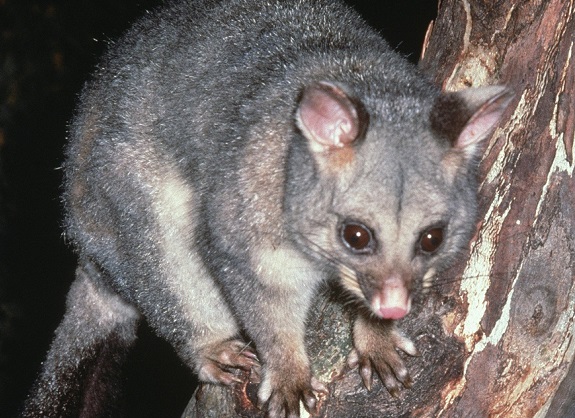 The Common Brushtail Possum (Trichosurus vulpecula) is about the size of a cat. It has large pointed ears, grey fur and a bushy black tail. Brushtail possums have a single young born in autumn or spring. The baby spends around six months in the pouch, one to two months riding on its mother's back until it is weaned and leaves the maternal den at 7–16 months old.
The Common Brushtail Possum (Trichosurus vulpecula) is about the size of a cat. It has large pointed ears, grey fur and a bushy black tail. Brushtail possums have a single young born in autumn or spring. The baby spends around six months in the pouch, one to two months riding on its mother's back until it is weaned and leaves the maternal den at 7–16 months old.
Common Ringtail Possum
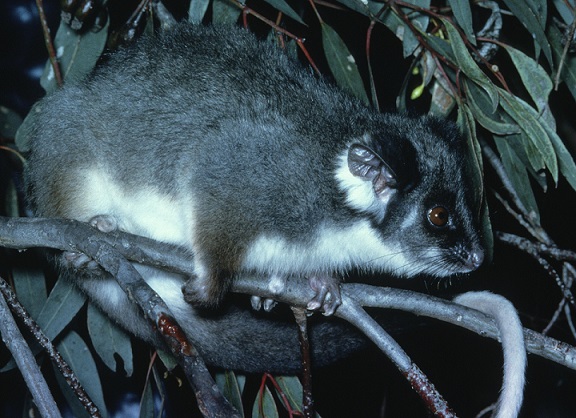 The Common Ringtail Possum (Pseudocheirus peregrinus) is much smaller than a brushtail, about half the size of a cat. Ringtail possums have round ears, a grey back with rusty sides and a curled tail with a white tip. They have one to three young, mostly twins, born during autumn or winter. Ringtail possums usually build a nest of twigs and leaves, called a drey, several metres above the ground. They rarely enter house roofs.
The Common Ringtail Possum (Pseudocheirus peregrinus) is much smaller than a brushtail, about half the size of a cat. Ringtail possums have round ears, a grey back with rusty sides and a curled tail with a white tip. They have one to three young, mostly twins, born during autumn or winter. Ringtail possums usually build a nest of twigs and leaves, called a drey, several metres above the ground. They rarely enter house roofs.
Possums living within buildings
Possums are protected under the Wildlife Act 1975. Possums must not be harmed in any way or kept without approval from DELWP.
It is illegal to harass or interfere with possums. However, common brushtail possums living within buildings, municipal parks and municipal gardens may be controlled.
The trapping of common brushtail possums living in buildings is permitted for the purpose of releasing them on the same property or taking them to a registered vet for euthanasia.
Common ringtail possums generally do not live in buildings or cause damage to municipal parks. It is illegal to trap a ringtail possum without a permit.
A Governor-in-Council order was put in place to permit the trapping of Common Brushtail possums living in buildings for the purpose of releasing them on the same property or taking them to a registered vet for euthanasia. It also permits possum management in municipal parks.
Possum Governor-in-Council (GIC) Order (PDF, 82.4 KB)
Possum Governor-in-Council (GIC) Order (RTF, 11.0 KB)
Trapping common brushtail possums
Trapping is a highly stressful experience for possums. The following conditions, limitations and restrictions apply in respect of trapping brushtail possums living within buildings:
Who can trap common brushtail possums ?
- Home-owners or occupiers and members of their families
- Building managers or their staff
- DELWP licensed Wildlife Controllers
Trap requirements
The use of traps is regulated under the Prevention of Cruelty to Animals Regulation 2016.
- A cage trap must be designed to avoid injury
- The trap must not grip any part of the animal's body and must not contain any hooks or protruding parts that may injure an animal.
- An ideal construction is a wire mesh box with mesh less than 19 millimetres square. If a trap with larger mesh is used possums can seriously damage their noses pushing them through the mesh
- Traps must be set in a stable level position protected from dogs, cats, wind, rain and direct sun at all times
- Possum traps are available for loan or hire from some local councils
Conditions of trapping
- All traps are to be checked no more than two hours after sunrise
- Trapped possums must be kept in the trap in a quiet place, covered with a cloth or bag
Releasing trapped possums
- Trapped possums must be released on the property on which they are captured, no more than 50 metres from the capture site after sunset on the day of capture.
- Relocation of brushtail possums is prohibited
- Where it is not reasonably possible to release the possum on your property, possums must be humanely destroyed by a registered veterinary practitioner, at the trapper's expense, within 24 hours of capture
- Releasing possums during the day increases their stress and puts them at risk of being attacked and injured
There is no other legal avenue to deal with possums.
Breaches of the above requirements can carry a penalty of up to $9,246 under the Wildlife Act 1975 and/or 2 years imprisonment or $44,380 under the Prevention of Cruelty to Animals Regulation 2016.
Relocating possums
Relocating possums is both illegal and inhumane. A study by Deakin University showed that relocation was harmful to possums.
The Deakin University study in Melbourne (Pietsch 1994) has shown that most relocated common brushtail possums die in stressful circumstances soon after release.
As part of the study, resident possums in a proposed release area were observed during 13 weeks.
During this time, no possum carcasses, partial remains, or patches of fur were found.
After the release of relocated urban possums in the same area, researchers recorded numerous patches of possum fur and the remains of eight possums most likely killed by foxes.
Another 12 possums fitted with radio collars were released, but only two were alive after 10 weeks.
Within the first week:
- four had been killed by predators, probably foxes
- two died of stress-related causes
- one was hit by a car
- two of the collared possums could not be found as their radios went off air prematurely.
While in normal circumstances, brushtail possums rarely sleep at ground level, the study showed that relocated possums spent significantly more time on the ground than resident possums, and 68 per cent of their dens were on or under the ground during the first week after release.
Contrary to popular belief, there was no evidence of any homing tendency in the released animals.
Dispersal was in random directions. Similar studies of common ringtail possums in Victoria and NSW have mirrored the Deakin results.
Clearly, relocation is not a humane way of managing possums.
As a result of the findings of the Deakin University study, the former Department of Environment and Primary Industries (DEPI) drafted a Governor-in-Council Order that prohibits the relocation of possums.
A Governor-in-Council Order was made on 8 July 2003 and published in Government Gazette G28, pages 1766–67 on 10 July 2003.
This order permits the trapping of Common Brushtail Possums living in buildings for the purpose of releasing them on the same property or taking them to a registered vet for euthanasia.
Relocation of possums to another site is prohibited, as research has shown that they cannot cope in new and unfamiliar environments and usually die within a few days of release.
The order also permits the trapping of Common Brushtail Possums living in municipal parks and municipal gardens, as part of a possum management plan that includes non-lethal measures, and only by holders of a commercial wildlife (wildlife controller) licence type 1 endorsed for taking possums.
Pietsch, R.S. 1994. 'The fate of urban common brushtail possums translocated to sclerophyll forest', Serena, M. (ed.) Reintroduction biology of Australian and New Zealand fauna. Surrey Beatty & Sons, Chipping Norton.
Alternative options to manage possums
Possums on roofs
To effectively stop possums getting onto your roof, watch for possums after dark and block off their access points.
Depending on the access point the possums are using, some potential solutions include:
- Make a one-way flap out of metal or perspex with a hinge at the top. Hinge the flap to allow possums out but not in. Cover the flap surrounds in metal to prevent possum claws from gripping.
- Prune all branches that lead to the roof. Leave a gap of at least 1.5 metres around the roof.
- Build a 30 centimetre floppy fence on top of your existing paling fence.
- Place collars around the trunks of trees that give access to the roof. Use 60 centimetres wide sheet metal or perspex and fit 60 centimetres above the ground.
- Contact your electricity or telecommunications companies for advice on possum-proofing transmission cables.
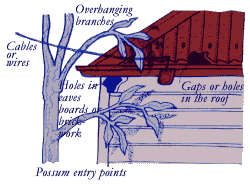
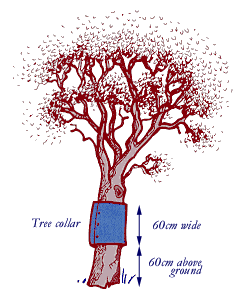
Possums in gardens
If possums are damaging ornamental plants or fruit in your garden you can:
- Build a floppy fence around the garden. Use 80 centimetre wide, heavily galvanised chicken wire, bury the bottom 20 centimetres in the ground and support the remainder on vertical lengths of flexible, high-tensile fencing wire. Bend the wire to curve the upper section outwards. When the possum attempts to climb the fence it will bend over and then spring back.
- Use collars to protect fruit trees.
- Repellents are an option, but tests have shown none of the 15 common repellent compounds effectively prevented possums damaging ornamental trees or fruit.
A number of commercial possum repellents are available:
Possum repellents fact sheet (DOC)
Possum repellents fact sheet (PDF)
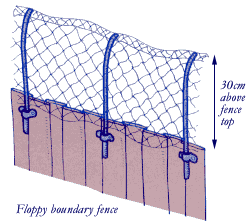
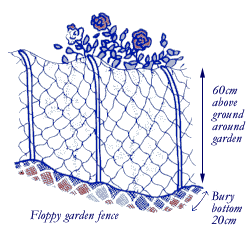
Possum nest boxes
Nest boxes can be installed in gardens as an alternative den site for possums.
Possums are territorial so if one adopts the nest box it is likely to keep others away from your roof and garden.
Nest boxes are commercially available or easily made from rough sawn timber. Nest boxes should be 19–25 millimetres thick to provide insulation.
Install the box in a stable upright position at least three metres above the ground.
Do not use treated timber, toxic paints, chipboard or smelly glues. Make sure there are no sharp edges or protruding nails and screws.
Check the nest box regularly and remove any nesting materials left by introduced birds such as mynas, sparrows or starlings.
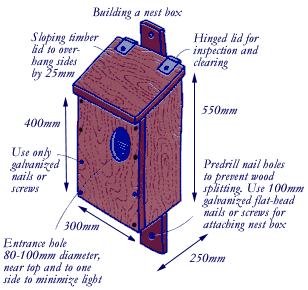
Brushtail possum management in municipal parks
The high number of Common Brushtail Possums in many urban municipal parks and gardens in Melbourne and some large regional centres can cause significant damage to ornamental plants.
This may lead to some park management problems for councils.
DELWP has developed guidance for councils to help manage possum populations and minimise damage.
The document is intended to assist parks and gardens managers, staff, (including environmental officers) and licensed wildlife controllers.
Managing Common Brushtail Possums in Municipal Parks and Gardens (DOC)
Managing Common Brushtail Possums in Municipal Parks and Gardens (PDF)
The guidance has been developed due to a Governor-in-Council order that permits local government to reduce the number of Common Brushtail Possums in municipal parks and gardens where a clearly documented possum management strategy has been prepared.
If you witness or suspect a case of wildlife mistreatment or cruelty, please contact the DELWP Customer Service Centre on 136 186 to connect with your local Wildlife Officer.
Page last updated: 15/07/22